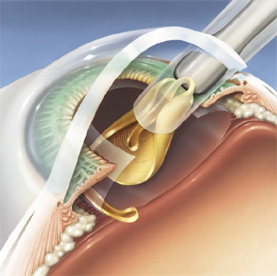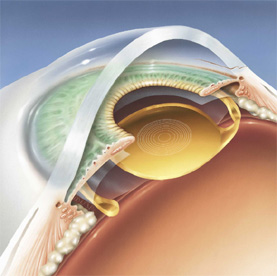Multifocal Intraocular Lenses
Multifocal lenses offer perhaps the best potential for reducing your dependence on glasses and contact lenses after Cataract Surgery or Refractive Lens Exchange. Our practice has extensive experience with all models of multifocal lenses dating back to 1997. Multifocal lenses work by providing simultaneous near and distance vision in each eye, thus allowing both eyes to work together for both distance and near. Currently, we offer the Tecnis family of multifocal lenses because we feel that they have the best quality optics of any multifocal on the market. Here is a link to the Tecnis information brochure from the manufacturer: http://www.tecnisiol.com/us/media/pdf/tmf/TECNIS%20Multifocal%20Family%20Patient%20Brochure.pdf
Weakness inherent in all multifocal IOL designs include aberrations that can cause glare and halos, especially at night. About 1 in 20 patients describe the glare and halos with multifocal lenses as “severe.” Multifocal lenses work best with binocular vision (both eyes working together), therefore, you will not get the full effect of multifocal vision until you have had surgery on your second eye.
Although multifocal lenses may represent your best option for reducing your dependence upon glasses and contact lenses, it is impossible to guarantee that you will be able to throw away your glasses. Reading glasses, for instance, will always magnify near objects, thus making them easier to see, even with multifocal lenses.
Because Medicare and private insurance companies generally consider multifocal lenses to represent a luxury technology that is not absolutely necessary for good vision, multifocal lenses are not covered by Medicare and insurance.



